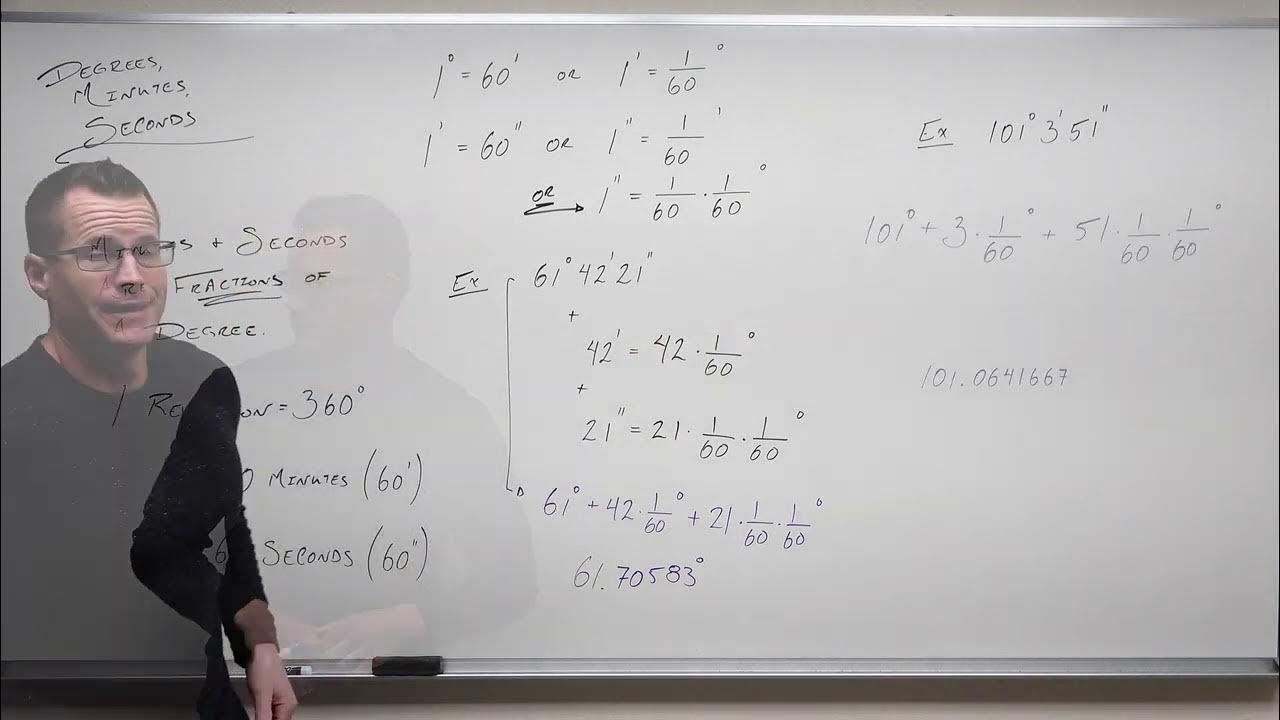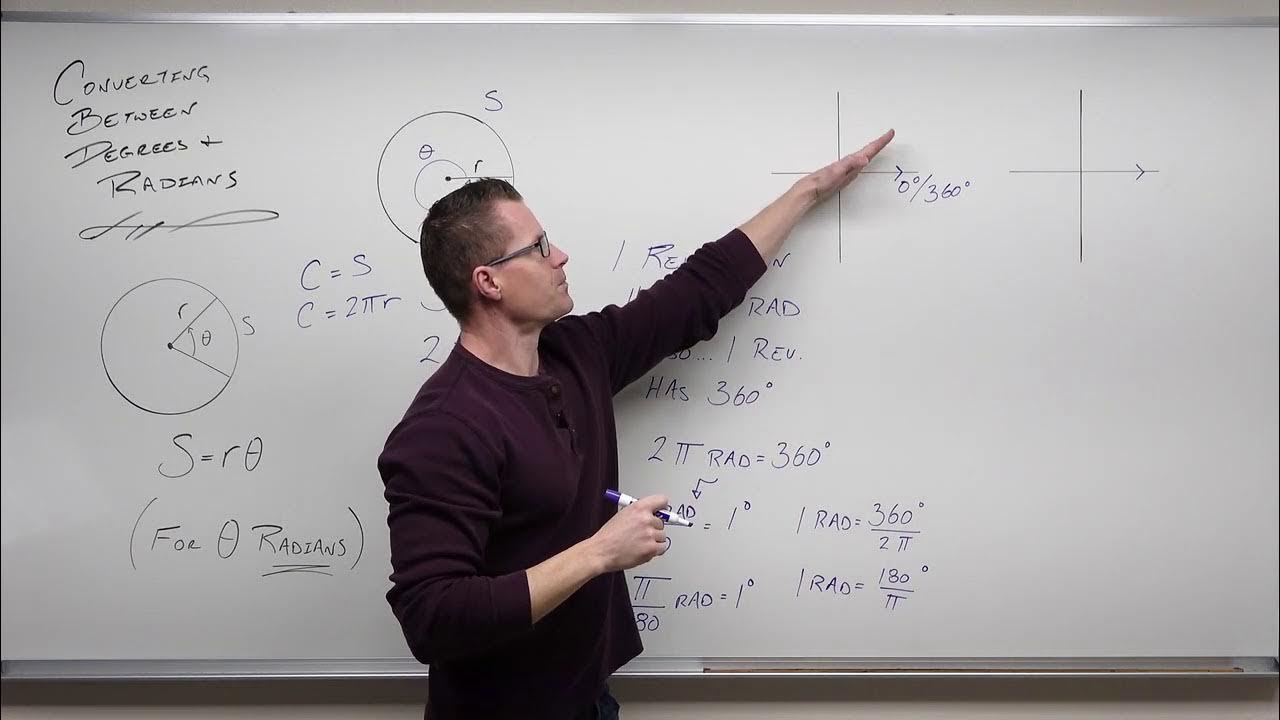MOA vs. MRAD in Scope Adjustments
TLDRThis video explains how telescopes adjust using angular values, specifically Minutes of Angle (MOA) and Milliradians (Mil-rads). MOA, common in the US, divides a circle into 360 degrees with each degree containing 60 minutes. At 100 yards, 1 MOA equals approximately 1 inch. Mil-rads divide a circle into 6,283.4 parts, often rounded to 6,400 for convenience, with 0.1 Mil-rad equating to 0.36 inches at 100 yards. The key takeaway is to match the reticle type with the adjustment knob type to avoid conversion complications, as one is not inherently better than the other.
Takeaways
- 🔭 Telescope adjustments are measured in angular values, not inches or centimeters.
- 📏 The two primary angular measurement systems are MOA (minutes of angle) and MRAD (milliradians).
- 🇺🇸 MOA is common on US-manufactured telescopes, based on the division of a circle into 360 degrees, 60 minutes per degree.
- 📐 At 100 yards, 1 MOA is approximately 1.047 inches, often rounded to 1 inch for simplicity.
- 🔍 The linear measurement of 1 MOA increases with distance, making it less precise at longer ranges, like 1000 yards where it's nearly 10.47 inches.
- 📏 MRAD divides a circle into 6283.4 divisions, often rounded to 6400 for convenience.
- 🔢 Milliradians are more coarse than MOA, typically using 0.1 MRAD divisions compared to 0.25 MOA.
- 🎯 The practical difference between MOA and MRAD is negligible; the key is matching the reticle type with the adjustment knob.
- 🧩 Having a mill reticle with a minute knob or vice versa requires conversion, which can be inconvenient.
- 🔄 If the reticle and knob are of the same type, adjustments are straightforward without the need for conversion.
- 🚫 Milliradians are not a metric unit of measure, despite the base-ten relationship; they are an angular measurement system.
Q & A
How do telescopes adjust their aim?
-Telescopes adjust in angular values, not in inches or centimeters, using either minutes of angle (MOA) or milliradians (mrad).
What is a minute of angle (MOA)?
-A minute of angle (MOA) is a unit of angular measurement where 1 MOA is 1/60th of a degree. It is commonly used on US manufactured telescopes.
What is a milliradian (mrad)?
-A milliradian (mrad) is another unit of angular measurement, where a full circle is divided into 6,283.4 milliradians.
Why might someone choose MOA over mrad or vice versa?
-The choice between MOA and mrad is typically based on the type of reticle and the adjustment knobs on the telescope. Matching the reticle with the corresponding adjustment unit avoids the need for conversion.
How does the angular measurement of 1 MOA translate to a linear distance at 100 yards?
-At 100 yards, 1 MOA is approximately equal to 1.047 inches, which is often rounded to 1 inch for simplicity.
What is the linear distance equivalent to 1 MOA at 1,000 yards?
-At 1,000 yards, 1 MOA is approximately 10.47 inches, which is nearly 10.5 inches.
How does the angular measurement of 1 mrad compare to MOA in terms of granularity?
-Milliradians are slightly more coarse than MOA because they are typically divided into 0.1 mrad increments, whereas MOA can be divided into quarters or even eighths.
What is the linear distance equivalent to 0.1 mrad at 100 yards?
-At 100 yards, 0.1 mrad is equivalent to 0.36 inches.
Why is it important for the reticle and adjustment knobs to match in terms of units?
-Matching the reticle and adjustment knobs in terms of units ensures that the shooter does not have to perform additional calculations to adjust the scope, making it easier to dial in the correct adjustments.
Is there a practical difference between using MOA and mrad for adjustments?
-There is no practical difference between using MOA and mrad; both systems are equally valid and it comes down to personal preference and the specific equipment being used.
Are milliradians a metric unit of measure?
-No, milliradians are not a metric unit of measure. They are a base-ten angular measurement system, unrelated to the metric system of measurement.
Outlines
🔭 Understanding Telescope Adjustments in MOA and Mils
This paragraph explains the concept of telescope adjustments, which are measured in angular values, specifically in minutes of angle (MOA) and milliradians (MIL or mils). It clarifies that MOA is commonly used in US-made telescopes, relating to the division of a circle into degrees and minutes, with 1 MOA equating to approximately 1 inch at 100 yards. However, this approximation becomes less accurate at greater distances. In contrast, mils divide a circle into 6,283.4 divisions, rounded to 6,400 for convenience, making them slightly coarser than MOA. The paragraph emphasizes the importance of matching the reticle type with the adjustment knob to avoid the need for conversion when making adjustments.
🧭 The Practicality of MOA vs. Mils for Scope Adjustments
The second paragraph delves into the practical differences between MOA and mils, highlighting that there is no inherent superiority of one system over the other. It discusses the mathematical relationship between the two, noting that there are 3.43 minutes in a milliradian, which could complicate adjustments if one has to convert between the two. The paragraph also dispels the misconception that mils are a metric unit, explaining that the term is unrelated to the metric system but rather a base-10 angular measurement. The key takeaway is the convenience of having a consistent system where the reticle type matches the adjustment knob increments, simplifying the adjustment process without the need for calculations.
Mindmap
Keywords
💡Telescope Adjustments
💡Angular Value
💡Minutes of Angle (MOA)
💡Milliradians (mrad)
💡Reticle
💡Clicks
💡Elevation Knob
💡Conversion
💡Base Ten
💡Metric System
💡Tolerance Stack Error
Highlights
Telescopes adjust in angular values, not inches or centimeters.
Angular values are typically in MOA (minutes of angle) or MRAD (milliradians).
MOA is common on US manufactured telescopes, based on the division of a 360-degree circle.
1 MOA equals approximately 1.04 inches at 100 yards, often rounded to 1 inch.
At 1000 yards, 1 MOA is nearly 10.47 inches, indicating potential for error.
MRAD divides a circle into 6283.4 divisions, often rounded to 6400 for convenience.
Milliradians are slightly more coarse than MOA, with .1 MRAD divisions.
At 100 yards, .1 MRAD is 0.36 inches, compared to .26 inches for 1/4 MOA.
The practical difference between MOA and MRAD is negligible.
It's important that the reticle matches the type of adjustment knob on the scope.
Having a mismatch between reticle and knob requires conversion calculations.
A mill reticle with a minute knob or vice versa can lead to inconvenience.
Milliradians are not a metric unit, despite the base-10 relationship.
The choice between MOA and MRAD does not indicate superiority or intelligence.
The transcript emphasizes the importance of matching reticle and adjustment system for ease of use.
Understanding the angular adjustment system is crucial for accurate telescopic use.
Transcripts
Browse More Related Video

Ranging with your reticle Yards and Meters

Long Range Shooting Series: Basics of MOA (Minute of Angle)

Converting Degrees, Minutes, and Seconds (Precalculus - Trigonometry 2)

30-60-90 Triangles - Special Right Triangle Trigonometry

How To Evaluate Trigonometric Functions Using Periodic Properties - Trigonometry

Converting Radians and Degrees (Precalculus - Trigonometry 4)
5.0 / 5 (0 votes)
Thanks for rating: